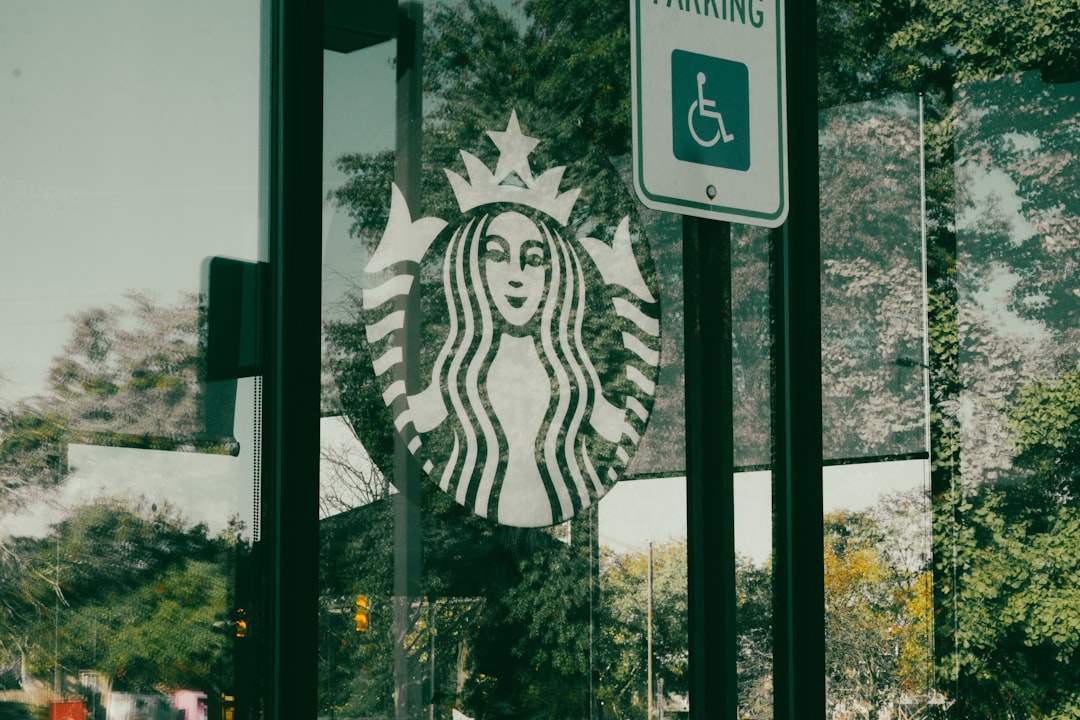“Eat It” – “Weird Al” Yankovic

“Weird Al” Yankovic has earned three gold and five platinum records in the U.S., and “Eat It” topped the Australian singles chart while reaching the top 15 in Canada and the United States. This parody of Michael Jackson’s “Beat It” became popular thanks in part to the music video, a shot-for-shot parody of Jackson’s “Beat It” music video, and what Yankovic sarcastically described as his “uncanny resemblance” to Jackson. Peaking at No. 12 on the Billboard Hot 100 on April 14, 1984, “Eat It” remained Yankovic’s highest-charting single until “White & Nerdy” placed at No. The song was more than just a gag – it became a legitimate radio hit that showed parody music could achieve genuine commercial success.
“Amish Paradise” – “Weird Al” Yankovic

Bad Hair Day, Yankovic’s ninth studio album was released in April 1996, peaked at numbers 9 and 14 respectively on the Canadian Albums Chart and Billboard 200. “Amish Paradise”, the album’s lead single, peaked at number 53 on the Billboard Hot 100. Coolio’s 1995 Hot 100 topper “Gangsta’s Paradise,” feat. L.V., was such a huge hit that “Weird Al” practically based his whole 1996 album promotion around it: the full-length was titled “Bad Hair Day,” featured Yankovic on the cover with the Coolio hairdo, and was led by the funkiest ode to the Amish lifestyle ever recorded. The song transformed a serious rap anthem about street life into a surprisingly catchy commentary on traditional Amish culture. Despite initial controversy over permissions, the track became one of Yankovic’s most recognizable hits and helped cement his reputation as more than just a novelty act.
“White & Nerdy” – “Weird Al” Yankovic

His first top ten Billboard album (Straight Outta Lynwood) and single (“White & Nerdy”) were both released in 2006, nearly three decades into his career. The thing about “Weird Al” Yankovic is that he can really, really rap. His 2006 parody of Chamillionaire’s Hot 100 No. 1 “Ridin’,” feat. Krayzie Bone, is a cleverly penned tribute to the nerdiest of us all, but Yankovic also proved his spitting skills with the rapid-fire verses. This track proved that parody music could evolve with the times, showing Yankovic’s ability to master contemporary rap techniques while celebrating geek culture in a way that resonated with millions of listeners who saw themselves reflected in the lyrics.
“Like a Surgeon” – “Weird Al” Yankovic

Yankovic’s third studio album, Dare to Be Stupid, was released in June 1985, peaked at number 17 on the Billboard 200, and produced six singles, the most successful being the Hot 100 hit “Like a Surgeon”. Even back in 1985, “Weird Al” knew that Madonna was a pop artist worthy of a high-profile homage: “Like A Surgeon,” which spoofs her Hot 100 No. The medical-themed parody of Madonna’s “Like a Virgin” showcased Yankovic’s knack for finding unexpected angles that were both hilarious and surprisingly clever. The song helped establish the template for successful pop parodies – taking a massive hit and completely reimagining its context while maintaining the infectious qualities that made the original successful.
“My Bologna” – “Weird Al” Yankovic

Yankovic’s first single, “My Bologna”, was released in 1979, and he made his chart debut two years later with his second single, “Another One Rides the Bus”, which peaked at number four on the Billboard Bubbling Under Hot 100 Singles chart. This parody of The Knack’s “My Sharona” was Yankovic’s very first commercial release, launching what would become one of the most successful comedy music careers in history. Capitol Records previously released “My Bologna” but had stopped returning Al’s calls, so he borrowed money from Demento to press his own records for “Another One Rides the Bus.” The song proved that even amateur recordings could capture the public’s imagination when they combined familiar melodies with absurd but relatable subject matter.
“Because I Got High” – Afroman

The song, which was written in only a few minutes, gained popularity after it was featured on The Howard Stern Show and circulated on the Internet. This was a worldwide hit. It has sold over one million copies across the globe, and was #1 in Germany, The UK, Ireland, New Zealand and Australia. The song sold over 1.5 million copies, earned a Grammy nomination, and was officially the jam of summer of 2001. What began as a humorous cautionary tale about marijuana use became one of the early viral internet sensations, spreading through file-sharing services before major record labels caught on. Back in 2000, “Because I Got High” was the original viral internet sensation. It wasn’t popularized by a major record label or plays on the radio, but by people frantically sharing it around the internet and on Napster.
“I’m on a Boat” – The Lonely Island ft. T-Pain

“I’m on a Boat” was a huge hit as an SNL digital short, but the song also resonated beyond the TV show’s reaches, ultimately peaking at No. 56 on the Billboard Hot 100 song rankings chart before being certified double platinum for shifting over 2 million units. It didn’t win, but the song nabbed a 2010 Grammy nomination. Samberg and Schaffer kindly gave Taccone a writing credit, so he’s included in the nod. As Schaffer noted on the podcast, it was not nominated for comedy, but Best Rap/Sung Collaboration thanks to T-Pain’s participation. The song, produced by Wyshmaster, is a parody of many rap video clichés, especially the music video for the Jay-Z song “Big Pimpin’.” This Saturday Night Live Digital Short transformed from a comedy sketch into a legitimate chart hit, proving that parody could achieve serious commercial success in the digital age.
“Dick in a Box” – The Lonely Island ft. Justin Timberlake

It received millions of views, and was their first single to go platinum by the Recording Industry Association of America. This SNL Digital Short featuring Justin Timberlake became a cultural phenomenon that transcended its comedy show origins. The song’s success helped establish The Lonely Island as more than just sketch comedians, proving they could create genuinely catchy music that worked both as parody and as legitimate entertainment. The track’s popularity demonstrated how celebrity collaborations could elevate parody content to mainstream success, setting a template that would influence comedy music for years to come.
“Thrift Shop” – Macklemore & Ryan Lewis

While “Thrift Shop” wasn’t technically a parody of another song, it began as a tongue-in-cheek celebration of secondhand shopping that many initially viewed as satirical. The track’s deliberately over-the-top enthusiasm for thrift store finds and its unconventional subject matter for a rap song made many listeners think it was purely comedic. However, the song’s infectious beat and Macklemore’s genuine passion for the message resonated far beyond its humorous origins. It became a massive mainstream hit, reaching number one on the Billboard Hot 100 and selling millions of copies worldwide, proving that authenticity could triumph even when wrapped in apparent irony.
“Red Solo Cup” – Toby Keith

Toby Keith’s “Red Solo Cup” started as what many considered a novelty song celebrating the ubiquitous plastic party cup. The track’s deliberately simple lyrics and Keith’s earnest delivery made it seem like either a brilliant parody of country music tropes or a genuinely heartfelt tribute to American party culture. Initially dismissed by critics as throwaway comedy, the song became a surprise hit, reaching the top 15 on country charts and becoming a staple at sporting events and parties across America. The success showed how sometimes the line between parody and genuine sentiment can blur, creating unexpected cultural moments that resonate far beyond their original intent.
“She Thinks My Tractor’s Sexy” – Kenny Chesney

Kenny Chesney’s “She Thinks My Tractor’s Sexy” began as what seemed like an obvious parody of country music’s rural stereotypes. The song’s title alone suggested it was mocking the genre’s obsession with farming equipment and rural romance. However, Chesney’s sincere delivery and the track’s surprisingly sophisticated production elevated it beyond mere novelty. The song became a massive country hit, reaching number 11 on the Billboard Hot 100 and becoming one of Chesney’s signature songs. Its success demonstrated how embracing stereotypes with genuine affection rather than mockery could create authentic connections with audiences who saw their own experiences reflected in the music.
“Achy Breaky Heart” – Billy Ray Cyrus

Billy Ray Cyrus’s “Achy Breaky Heart” initially struck many listeners as an over-the-top parody of country music’s most basic elements. The song’s simple lyrics, repetitive chorus, and Cyrus’s distinctive delivery made it seem like an intentional caricature of Nashville conventions. Music critics largely dismissed it as novelty fluff that would quickly fade. Instead, the track became one of the biggest country crossover hits of the 1990s, reaching number four on the Billboard Hot 100 and launching both the line dancing craze and Cyrus’s career. The song’s success proved that sometimes what appears to be parody can tap into genuine cultural desires for fun, simplicity, and danceable music.
“Gangnam Style” – PSY

PSY’s “Gangnam Style” started as a satirical commentary on the wealthy Gangnam district of Seoul, with the artist intending to parody the pretentious lifestyle of Korea’s upper class. The video’s deliberately absurd visuals and PSY’s exaggerated dance moves were meant to mock materialistic culture. However, the song’s infectious energy and the iconic horse-riding dance transcended cultural and language barriers, becoming the first YouTube video to reach one billion views. The track reached number two on the Billboard Hot 100 and introduced K-pop to mainstream Western audiences. What began as local social commentary became a global phenomenon that changed the music industry’s understanding of viral content and international appeal.
“Stacy’s Mom” – Fountains of Wayne

Fountains of Wayne’s “Stacy’s Mom” began as an affectionate parody of 1980s pop-rock and the universal teenage experience of having crushes on friends’ mothers. The band crafted the song as a nostalgic tribute to The Cars and similar new wave acts, complete with deliberately cheesy lyrics and retro production. The music video, featuring model Rachel Hunter, enhanced the throwback aesthetic with its MTV-era styling. Despite its tongue-in-cheek origins, the track became a genuine hit, reaching number 21 on the Billboard Hot 100 and earning widespread radio play. The song’s success showed how parody could evolve into genuine appreciation, creating new classics by celebrating older ones.
“Tribute” – Tenacious D

Tenacious D’s “Tribute” was conceived as an elaborate joke about Jack Black and Kyle Gass’s supposed encounter with a demon who demanded they play “the best song in the world.” The entire premise was absurd – two comedic musicians claiming they once performed an impossibly perfect song but could only remember a tribute to it. The track’s mock-epic structure and Black’s over-the-top vocals were clearly designed for laughs. However, the song’s genuine musical craftsmanship and the duo’s obvious love for classic rock transformed it into something special. “Tribute” became a rock radio staple and helped establish Tenacious D as legitimate musicians who happened to be hilarious, rather than just comedians who played music.
“Friday” – Rebecca Black

The song had a polarizing reaction as while it peaked at number 58 on the Billboard Hot 100, it was also panned by audiences and music critics, many of whom considered it “among the worst songs ever made”. The song’s video was uploaded to YouTube on February 10, 2011, and received approximately 1,000 views in the first month. The video went viral on March 11, acquiring millions of views on YouTube in a matter of days, becoming the most discussed topic on social networking site Twitter, and garnering mostly negative media coverage. Black was seeing the first of what would eventually be millions of comments slagging the video. “Friday” was on its way to becoming one of the biggest viral phenomena of the 2000s. Over the next three months, the song would be viewed 167 million times, making it the most-watched YouTube video of that year. The music video for the song is one of the most disliked YouTube videos of all time. What began as a legitimate attempt at a teen pop song became a massive viral sensation precisely because of its amateur production and seemingly innocent lyrics, transforming mockery into unexpected commercial success.
“Baby Got Back” – Sir Mix-a-Lot

Sir Mix-a-Lot’s “Baby Got Back” began as what many considered an exaggerated parody of hip-hop’s focus on physical attraction and materialism. The song’s opening fake conversation and Mix-a-Lot’s deliberately over-the-top delivery seemed designed to mock rap conventions. However, the track’s celebration of body positivity and its catchy, sample-heavy production connected with audiences who appreciated both its humor and its message. The song reached number one on the Billboard Hot 100, stayed there for five weeks, and won a Grammy Award for Best Rap Solo Performance. Its success demonstrated how music that starts as apparent parody can become culturally significant, challenging beauty standards while entertaining millions.
“United States of Whatever” – Liam Lynch

Liam Lynch’s “United States of Whatever” was created as a deliberately minimalist parody of punk attitude and American rebelliousness. The song’s repetitive lyrics and Lynch’s monotone delivery were intended to mock both musical and cultural pretensions. The track gained popularity through MTV’s Total Request Live, where its intentionally low-fi aesthetic and anti-establishment message resonated with viewers. Despite its satirical origins, the song became a genuine alternative rock hit, reaching number 10 on the UK Singles Chart. Lynch’s success showed how parody could tap into real cultural frustrations, with audiences embracing the song’s apparent cynicism as authentic expression of their own attitudes toward mainstream culture.
“The Fox (What Does the Fox Say?)” – Ylvis

Norwegian brothers Ylvis created “The Fox (What Does the Fox Say?)” as a promotional joke for their talk show, intending to parody the absurdity of viral music videos and children’s educational songs. The track’s nonsensical lyrics and deliberately ridiculous animal sounds were meant to demonstrate how easily meaningless content could capture online attention. However, the song’s unexpected catchiness and the video’s professional production quality transformed it into a genuine global phenomenon. The track reached the top 10 in multiple countries and became one of YouTube’s most-watched videos, generating millions in revenue. Ylvis discovered that their parody had accidentally tapped into the same elements that make legitimate viral hits successful.
“Barbie Girl” – Aqua

Danish-Norwegian group Aqua’s “Barbie Girl” was conceived as a satirical commentary on consumer culture, gender stereotypes, and the artificial nature of pop stardom. The song’s lyrics and candy-colored aesthetic were designed to mock both the Barbie brand and the superficiality of 1990s dance-pop. However, the track’s infectious Eurodance production and the vocalists’ committed performances transcended its satirical origins. “Barbie Girl” became a worldwide number-one hit, selling millions of copies and becoming a defining song of the late 1990s. The success led to legal battles with Mattel, but also proved that effective parody could become more culturally significant than its target, creating new meaning through exaggeration and irony.
What makes these tracks so fascinating is how they blur the line between mockery and celebration. Each began with comedic intent but discovered something deeper – whether genuine musical craftsmanship, cultural commentary, or simply the universal power of a great hook. They remind us that sometimes the best art comes from not taking ourselves too seriously, and that laughter might just be the most direct path to people’s hearts. Who would have thought that making fun of something could end up making it immortal?







